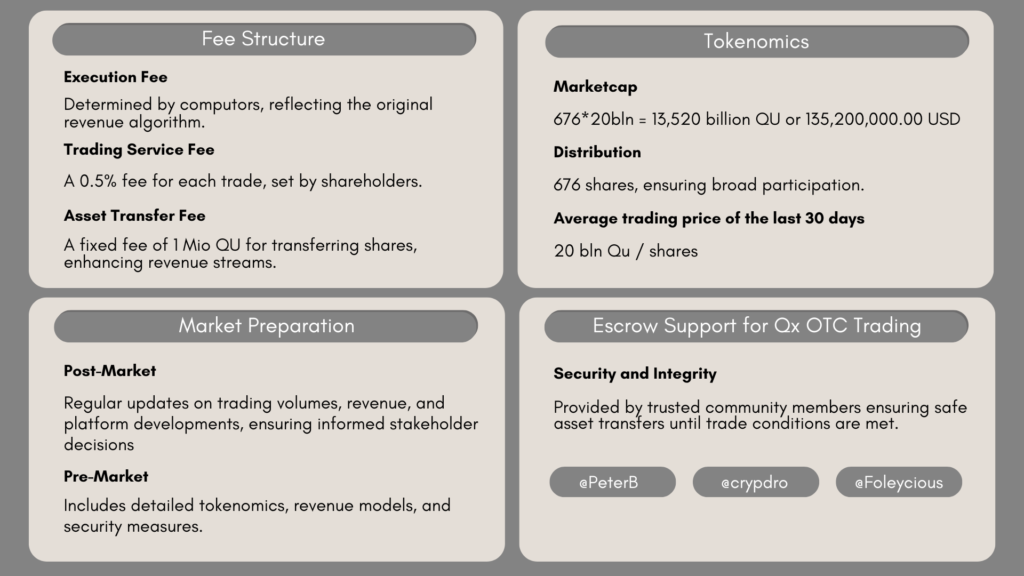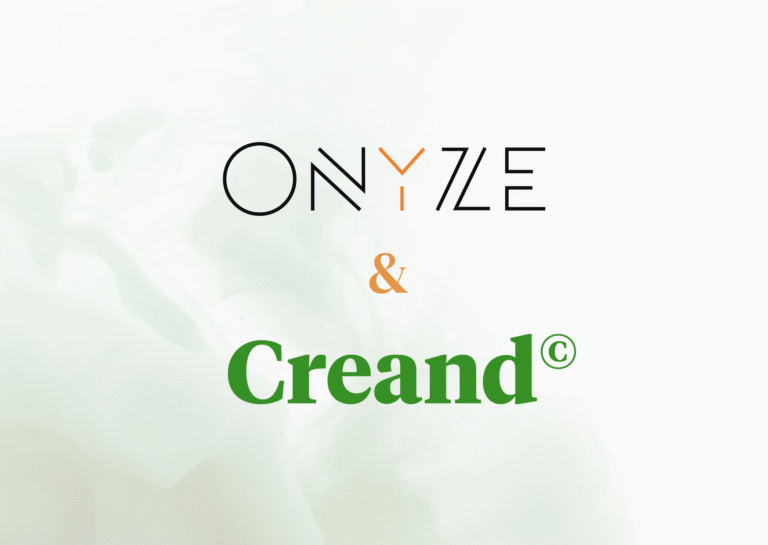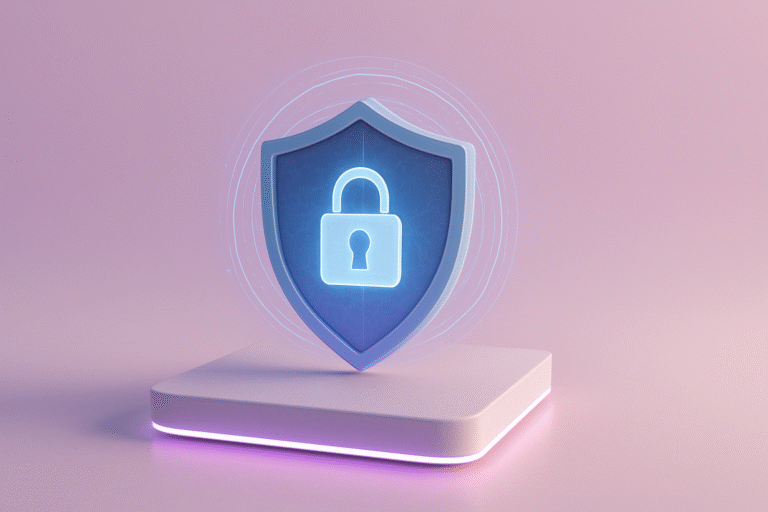In the dynamic world of distributed ledger technology (DLT), Qubic stands out as a true innovator, led by Sergey Ivancheglo, aka Come-from-Beyond, known for his work on projects such as IOTA and NXT.
Qubic not only redefines what we know as distributed ledgers; its focus on Quorum-Based Computing (QBC), described in 1998 by Nick Szabo – Quorum Systems (uva.nl), changes the rules of the game. It also uses distributed ledger technology to store the results of artificial intelligence (AI) training, opening the door to a new era in distributed computing and finance.
The concept of AI + distributed Quorum integration is what makes Qubic unique, meaning it can harness the computational power of miners through its Aigarth AI platform. This combination will create applications that can learn and adapt without compromising security or privacy, which could revolutionize fields such as personalized medicine, natural resource management, logistics and many more.
Qubic Architecture
In Qubic’s architecture, 676 computors, supported by their respective miners, are responsible for performing network processes, from executing smart contracts to facilitating transactions on the Spectrum, Qubic’s ledger. To ensure reliability, a Quorum (consensus) of at least ⅔+ (451+) computors is required to validate each tick (block analogy) before it is considered final.
Broadcasting the list of the 676 computors allows all nodes to verify that the appropriate computor has signed a particular tick. For each tick, the next computor in the list becomes the tick leader and signs the tick if it reaches Quorum. Therefore, the tick data can be verified by the signature of the corresponding computor.
In addition, Qubic’s quorum does not require an explicit link between blocks, mitigating problems common to other blockchains, such as chain reorganizations and 51% attacks.
K12 Hash Algorithm
The K12 algorithm, developed by the Keccak team (creators of SHA-3), was chosen for its robustness and superior speed compared to traditional algorithms such as SHA-256. Qubic uses K12 to transform an alphanumeric seed into a high entropy private key, which is critical for cryptographic security. This step guarantees the uniqueness of each private key and its resistance to brute force attacks.
This architectural approach sets a new standard in distributed ledger platform design, combining a state-of-the-art hash algorithm with a secure and efficient key generation system to provide a robust and scalable solution for the distributed computing and financial needs of the future.
- Key and address generation: The Qubic system uses a 55-character lowercase alphanumeric seed to generate 256-bit private keys using the K12 hash algorithm. From the private key, the public key is generated by a standard elliptic curve multiplication operation (ecc_mul_fixed) using the FourQ curve for signing. The public addresses, on the other hand, are derived from the public key and secured with a K12 based checksum for additional verification. This approach not only ensures security, but also simplifies the validation of public addresses. All of this, and even the generation of a txhash, can be found in 100 lines of easy-to-understand code in qubic-cli/keyUtils.cpp on GitHub.
The inclusion of the FourQ curve in the digital signature process significantly strengthens the cryptographic security of the system by providing one of the most efficient and secure elliptic curves available. The FourQ curve enables faster and more secure digital signatures, optimizing cryptographic operations without compromising security.
This set of technologies creates an effective and easy-to-validate system for users, underscoring Qubic’s commitment to security and efficiency in the age of distributed computing and finance.
Spectrum, the blockchain equivalent
The Qubic Spectrum represents a significant advancement in the management and recording of transactions in distributed networks. As a digital ledger, the Spectrum guarantees transparency and security, introducing innovations that strengthen the reliability and integrity of each processed transaction.
- Transparency and security in transaction recording: Each transaction within the Qubic network is recorded as a new entry in the Spectrum, providing a clear and unalterable history of operations. This ability to track each transaction in detail is fundamental to trust in the system, as it ensures that all participants have access to a transparent and verifiable record of activity on the network.
- Immutability of the Spectrum: Once a transaction is validated and added to the Spectrum, it becomes immutable. This means that it cannot be altered or deleted, thus ensuring the long-term integrity of the transaction log. This immutability is essential to prevent fraud and ensure that the Qubic network is resistant to attacks and manipulation.
- Access and verification: Spectrum is directly accessible from any computor via the Spectrum Information Tool (qubic.li CLI), allowing users and developers to verify transactions and smart contract status in real time. Implementing this level of accessibility underscores Qubic’s commitment to transparency, allowing all participants to verify the authenticity and status of transactions on the network.
- Security and decentralization: The decentralized structure of the Spectrum ensures that control of information is not concentrated in a single entity or group. By distributing the registry across multiple computors, Qubic strengthens the security and resilience of the network against censorship attempts or malicious attacks. In addition, any attempt to change the spectrum would require the consensus of a majority of the machines, making it practically infeasible.
- Recording epochs and QUs generation: The Qubic Spectrum records important transactions and events, such as the generation and distribution of QUs (Qubic Units), facilitating planning and economic analysis. Each epoch lasts seven days and produces 1 trillion QUs, which are distributed mainly among the 676 computors. Each computor can receive up to 1.479 billion QUs under optimal conditions, with the remainder allocated to the Arbitrator. The total supply is limited to 1000T QUs, excluding emission coins.
- Transfers and fees: Qubic differentiates itself from traditional systems by eliminating fees on its network, which improves the efficiency and usability of the platform. As discussed above in the sections on Smart Contracts and Zero-Fee Transfers, transaction fees associated with the execution of Smart Contracts are not delivered to the computors, but are burned. This reinforces the idea that QUs are more like “energy” than money, offering an innovative and unique approach.
Qubic features
Qubic reimagines the future of intelligent systems. This paradigm shift redefines how advances in artificial intelligence are developed and accessed by decentralizing and making transparent the record in a distributed and decentralized ledger called the Spectrum. This democratization of knowledge and global collaboration is transforming the way intelligent systems are developed and applied, setting the stage for a future where AI innovation is more accessible and equitable for all.
Here are some of the key features that make Qubic so exciting:
UPoW
Qubic’s Useful Proof of Work (UPoW) protocol directs the computational power of miners to training Artificial Neural Networks (ANNs), leveraging the network’s ability to advance machine learning. In this protocol, the ranking of computors depends on the effectiveness of their miners in solving complex problems, rather than simply validating transactions or creating new ticks. The main goal is to determine the ranking of a computor for each epoch, which, as mentioned above, is equivalent to a period of one week.
- Optimization of computational resources: Qubic’s UPoW algorithm transforms mining, commonly viewed as an energy-intensive task of solving mathematical problems with no practical value outside the network, into a productive process that contributes to the advancement of AI.
- Network security and AI advancement: The mining process not only maintains network security by validating transactions and creating new ticks, but also fosters the development and improvement of artificial intelligence models. This dual approach ensures that the energy and time spent on mining delivers high value and advances AI research and application.
- Energy efficiency: Unlike traditional PoW methods, Qubic’s UPoW ensures that energy consumption contributes directly to technological progress. This approach is not only more environmentally sustainable, but also aligns miners’ incentives with advances in the rapidly growing field of AI.
- Contribution to AI: AI tasks within the UPoW can range from processing large data sets to refining machine learning algorithms, offering a wide range of possibilities. The results of these mining tasks have the potential to significantly improve the efficiency and effectiveness of AI systems in a variety of applications, from image recognition to autonomous decision making.
Aigarth AI
At the intersection of what we know as artificial intelligence and the distributed ledger, a revolutionary concept is emerging: “Aigarth”. This term, derived from the combination of “AI” (artificial intelligence) and “garth” (yard or garden), encapsulates the vision of an environment in which true artificial intelligence can flourish and thrive.
True AI, which strives to replicate the complexity of human thought, finds its platform of expression in Aigarth.
Qubic, the driving force behind this initiative, seeks not only to integrate AI into its ecosystem, but to redefine the future of intelligent systems by democratizing access to them. Through Layer 2 (Aigarth), Qubic is opening the door to the limitless potential of collective intelligence by harnessing the computational power of miners to drive the advancement of AI.
In a world where distributed ledger technology is redefining the boundaries of innovation, Aigarth is emerging as a beacon of hope, fostering a new paradigm where collaboration and democratization are the fundamental pillars of technology development.
Advanced Smart Contracts, dApps and DeFi
Smart contracts in Qubic are not limited to traditional financial applications; they go beyond that to enable the creation of complex, autonomous applications that operate in a decentralized manner across the spectrum. Not only can these smart contracts automatically manage aspects such as training, execution and evolution of AI models, but they also represent a significant evolution in application development by embedding AI at the heart of the network. With the ability to automate complex processes, these smart contracts reduce the need for intermediaries and improve transparency in trade execution.
Execution fees are an integral part of this system. In Qubic, the amount of fees charged for executing smart contracts is not set by a single central entity, but is democratically determined by the computors, which are the nodes in the network. Through a voting process in the Quorum, the computors set the value of these fees. However, these fees are not paid to the computors but, as mentioned above, are eliminated, reinforcing the view of the “QUs” as a kind of “energy” that powers the network.
This allows the grid to automatically adapt to changes in demand and other market conditions by adjusting the amount of QUs in circulation. This democratic approach not only ensures that resources are distributed fairly, but also strengthens the independence and sustainability of the Qubic network.
Oracles in Qubic
The oracles in Qubic play an essential role, acting as intermediaries between the physical and digital worlds, allowing smart contracts to access and react to external information and events. This ability to integrate real-world data greatly expands the scope and utility of smart contracts on the Qubic platform, offering practical applications in a variety of industries.
In essence, oracles are trusted data sources that can provide data on real-world events, financial market price fluctuations, sports game results, weather changes, and much more. This information can be used by Qubic smart contracts to perform pre-defined actions when certain conditions are met based on accurate, real-time data.
It is therefore essential that oracles are highly reliable and that the information they provide is verifiable and secure. Qubic addresses this challenge by using multiple oracles on the same data set or by using consensus methods to validate the information, minimizing the risk of manipulation or error.
The integration of oracles in Qubic broadens the range of applications for dApps and smart contracts in areas such as artificial intelligence, trading and micropayments. The direct execution of smart contracts in hardware, written in C++, put Qubic at the forefront of speed and execution.
Zero-fee transfers
Qubic is unique in offering zero-fee transfers, a rarity among distributed ledger technologies. While smart contract execution typically involves a fee, in Qubic, computors vote by quorum to set the fee level, which is then burned in to regulate inflation and deflation. In addition, all transactions in Qubic can include up to 1024 bytes of additional data. However, it is important to note that all transactions are pruned at each epoch change. Only balance change summaries survive the epoch change, and only if the balance is non-zero. This combination of features makes transactions not only economical, but also resource efficient.
IPOs on Qubic
The successful execution of the first Initial Public Offering (“IPO”) demonstrates Qubic’s adaptability to traditional financial processes, providing a decentralized and transparent platform that brings a new level of accessibility and openness to the creation and distribution of digital assets.
The IPO execution contracts incorporate a Dutch auction mechanism, ensuring a fair and transparent bidding process in which the highest bidder wins. This method allows bidders to bid the price they believe the offering is worth, potentially resulting in a more accurate valuation than traditional methods.
This approach promotes equality, inclusivity and efficiency within the Qubic community.
Qx
Qx is the first decentralized exchange within the Qubic ecosystem. Its development was initiated after an IPO of 676 shares to the community at epoch 65. Qx holders will receive passive income from trading fees. This exchange has the particularity of taking advantage of a network with a speed of 55M transfers per second. This opens infinite possibilities. We will mention some of them in the specific use cases section.
The following table lists the main features of the Qx:

Code bare metal
Qubic’s design allows it to operate directly on hardware without relying on an operating system. This unique feature contributes to the efficient use of hardware, improves security, and enables fast task execution.
Qubic operates using the RAM memory of the consensus-building nodes (Quorum), without relying on an operating system. This approach eliminates the overhead associated with an operating system, resulting in incredible performance. This decision was made to maximize the performance and efficiency of the platform.
Decentralized nature and open source
Qubic’s decentralized nature ensures that the network is resilient to cyber-attacks, avoids single points of failure, and builds trust among participants. Based on distributed ledger technology, it uses a Quorum-Based Consensus algorithm to maintain a secure and synchronized record of all transactions. Nodes on the network validate these transactions, ensuring the integrity and immutability of the ledger.
In addition, Qubic is governed by open source principles. This means that its source code is publicly available for anyone to examine, modify and improve. This approach fosters a collaborative environment where developers from around the world can contribute to the advancement of the project, making it a community-driven platform.
Unprecedented speed and security
Qubic uses K12 (Keccak Team) instead of SHA256 to improve the speed of transactions and smart contracts. This choice enables near-instantaneous transaction execution, securing processes in sub-seconds, unlike other platforms that can take several seconds or minutes.
Operating directly in hardware and in UEFI mode, Qubic maximizes the potential of the underlying hardware, ensuring a high levels of efficiency and performance. This approach eliminates potential bottlenecks and latency issues associated with systems that operate across multiple layers of software and hardware.
In addition to improving efficiency and performance, this design strengthens security by reducing the attack surface associated with complex software layers. As a result, transactions are processed and smart contracts are executed in a timely and secure manner.
Qubic guarantees security, efficiency and scalability, up to 55 million transfers per second, ensuring a robust and adaptable environment for its users.
Use cases
Qubic is revolutionizing the use of distributed ledger technology with the integration of Aigarth and its ability to process 55 million transfers per second, opening up specific use cases that were previously unimaginable. The combination of these technologies offers innovative solutions in several areas, some of the most promising of which are highlighted below:
- Ultra High Frequency Trading without bots: Qubic is transforming the financial trading landscape with DEX “Qx”, enabling ultra-high frequency trading directly through AI applications without the need for bots. This not only speeds up trading but also increases accuracy and reduces the risks associated with traditional algorithmic trading. The implementation of AI oracles and nodes acting as market makers would facilitate a fairer and more efficient trading ecosystem.
- Chip design: Qubic’s technology extends to chip design, preparing for a future dominated by advanced artificial intelligence. This capability could lead to a revolution in semiconductor manufacturing by optimizing chip design and production to meet the processing requirements of advanced AI, thereby improving its integration into various industries.
- Distributed Computing Power: Qubic creates a global supercomputer by harnessing the power of distributed systems. This global network can handle complex computational needs, from advanced simulations to AI model training. Qubic’s consensus mechanism ensures the efficiency and security of these computational tasks by leveraging globally underutilized resources.
- Medical sector: Qubic’s ability to process and evaluate clinical trials in a decentralized manner could be a catalyst in medical research, accelerating the development and improvement of treatments. This enables unprecedented collaboration in the analysis of medical data, enabling advances in personalized medicine and targeted treatments.
- Supply chain: Qubic promises to revolutionize supply chain and logistics with its fast, secure and scalable platform. Real-time supply chain tracking and automation is now possible, with smart contracts for automated validation and execution of contracts, reducing errors, fraud and inefficiencies.
- AI Training: The Qubic ecosystem’s use of Useful Proof of Work (UPoW) to train artificial neural networks (ANNs) represents an innovation in AI development. This approach effectively redirects computing power to real-world applications and provides a robust and distributed platform for training and validating AI models.
- Micropayments: With its native QU token, Qubic is introducing a zero-fee transfer system that enables micropayments. This has the potential to revolutionize sectors where small transactions are common but limited by transaction fees, such as content monetization and IoT communications.
Each of these use cases demonstrates the transformative potential of Qubic in different sectors, ushering in a new era of distributed and decentralized ledger technology and artificial intelligence.
Join the Qubic community
This community is based on the collaborative efforts of individuals with a wide range of skills and experience, all united by a common goal: to drive innovation and development within the Qubic ecosystem. Active participation in this project not only allows members to leave their mark on emerging technology, but also provides opportunities for learning, personal and professional growth, and building an invaluable network of contacts.
For those interested in contributing, an excellent starting point is to consider submitting proposals to the CCF. These actions not only benefit the Qubic ecosystem, but also provide an opportunity for learning, professional development, and recognition within a community at the forefront of distributed ledger technology and artificial intelligence.
Computors Controlled Fund (CCF)
The CCF is a democratizing mechanism that puts decision-making and project funding power directly into the hands of the Qubic community. It operates on the principle of a Decentralized Autonomous Organization (DAO), where resources are allocated to projects that the community deems valuable for the advancement of the Qubic ecosystem. Key aspects of this initiative include
- Project proposals: Any member of the community can submit a project proposal that aims to improve or extend the Qubic ecosystem in any way. This fosters an atmosphere of open innovation where ideas can come from any source.
- Community voting: Projects are selected and funded based on community votes. This democratic approach ensures that funding goes to projects that have broad support and are aligned with the interests and needs of the community.
- Rapid implementation: Once approved, funding enables rapid implementation of proposals, accelerating the process of innovation and ecosystem adaptation to new challenges and opportunities.
The Steering Committee (SteCo) plays an essential role in guiding and coordinating these activities. This group works closely with the community to ensure that decisions made reflect the collective interests and promote the well-being of the Qubic ecosystem.
By working with the CCF, the SteCo ensures effective and transparent governance, allowing Qubic to remain at the forefront of technological innovation while respecting the voice and vote of its community. This synergy between the CCF and the SteCo exemplifies Qubic’s commitment to community-led development and inclusive decision-making.
Conclusions
Qubic is distinguished by its commitment to continuous innovation, embracing the dynamic nature of technology and anticipating the future needs of society. Open source development is central to this process, allowing code and ideas to be freely shared within the community. This transparency not only ensures the security and robustness of the platform, but also stimulates constant evolution fueled by collective creativity and ingenuity.
Qubic’s vision of a decentralized future goes beyond theory; it is a tangible reality being built today. By focusing on frictionless microtransactions, decentralized quorum-based decisions, and scalable AI solutions, Qubic is opening new avenues for personal autonomy and business innovation. Decentralization holds the promise of a world where power and control are equally distributed, and Qubic is at the forefront of making that promise a reality.
If you found this article interesting, we recommend the following video:
We also provide the following list of resources to help you keep up with the latest developments:
Website
Qubic Browser
Wallet
Community documentation
Discord
Telegram
Come-from-Beyond’s articles on Medium
Want to learn more about blockchain technology? Don’t miss these resources!
- The ultimate guide to the Bitcoin blockchain: Understanding its workings and potential
- Exploring the blockchain technology
- Harnessing the power of blockchain technology in businesses
At Block&Capital, experts in IT recruitment in Spain, the UK, the USA, and Andorra, we connect companies with exceptional tech talent. Our mission is to create opportunities where growth and success are within everyone’s reach. Contact us today to find the right IT talent for your company.
Last posts





